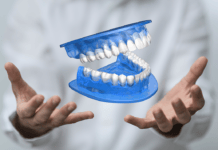During my clinical career in dental hygiene, I had the opportunity to work in five different dental practices across three states. Some were private practices, and some were DSOs. Though many protocols were similar or, in some cases, precisely the same, the one thing that was always different in every practice was the protocols for medical clearance.
Differing protocols from practice to practice for medical clearance seems to be the case for other dental professionals, as the topic often comes up in many groups on social media. This begs the question, what is the proper protocol for acquiring medical clearance before dental treatment for pregnant patients and conditions such as myocardial infarction, cerebrovascular accident, or patients on anticoagulant or antiplatelet therapy?
Pregnancy
Too often, dental professionals treat pregnancy as a disease; pregnancy is not a disease. Though there are complications that can occur during pregnancy, a healthy pregnant patient should be treated like any other healthy patient.
The American Dental Association (ADA), the American College of Obstetrics and Gynecology (ACOG), and the Health Resources and Services Administration’s Maternal and Child Health Bureau have issued a consensus statement and offered guidance for treating pregnant patients.1
The consensus statement states, “Reassure women that oral health care, including use of radiographs, pain medication, and local anesthesia, is safe throughout pregnancy.”1 The only time medical clearance/consultation is needed before dental care is in the following scenarios:1
- Co-morbid conditions that may affect the management of oral health (i.e., diabetes, hypertension, pulmonary or cardiac disease, bleeding disorders)
- The use of intravenous sedation or general anesthesia
- The use of nitrous oxide as an adjunctive analgesic to local anesthetics
Pharmacological considerations for the use of analgesics, antibiotics, anesthetics, and antimicrobials for pregnant patients include:1
| Analgesic | Indications, Contraindications, and Special Considerations |
|
Acetaminophen Acetaminophen with codeine Hydrocodone Oxycodone Codeine Meperidine Morphine |
-May be used during pregnancy -Oral pain can often be managed with non-opioid medications -If opioids are used, prescribe the lowest dose for the shortest duration (usually less than 3 days) |
|
Aspirin Ibuprofen Naproxen |
-First trimester: Avoid use -Second trimester, 13 up to 20 weeks: May use for short duration, 48 to 72 hours -Second trimester, 20 up to 27 weeks: Limit use -Third trimester: Avoid use |
Analgesic considerations for pregnant patients
Adapted from Oral Health Care During Pregnancy Expert Workgroup1
| Antibiotic | Indications, Contraindications, and Special Considerations |
|
Amoxicillin Cephalosporins Clindamycin Metronidazole Penicillin |
May be used during pregnancy |
|
Ciprofloxacin Clarithromycin Levofloxacin Moxifloxacin |
Avoid during pregnancy |
|
Tetracycline |
Never use during pregnancy |
Antibiotic considerations for pregnant patients
Adapted from Oral Health Care During Pregnancy Expert Workgroup1
| Anesthetic | Indications, Contraindications, and Special Considerations |
|
Local anesthetic with epinephrine: bupivacaine, lidocaine, mepivacaine |
May be use during pregnancy |
|
Nitrous oxide 30% |
May be used during pregnancy when topical or local anesthetics are inadequate. Pregnant women require lower levels of nitrous oxide to achieve sedation; consult with prenatal care health professional before administration. |
Anesthetic considerations for pregnant patients
Adapted from Oral Health Care During Pregnancy Expert Workgroup1
| Antimicrobial | Indications, Contraindications, and Special Considerations |
|
Cetylpyridinium chloride mouth rinse Chlorhexidine mouth rinse Xylitol |
May be used during pregnancy |
Antimicrobial considerations for pregnant patients
Adapted from Oral Health Care During Pregnancy Expert Workgroup1
Dental care is not only safe during pregnancy but it is also encouraged. Rest assured that providing treatments, including prophylaxis, non-surgical periodontal therapy (NSPT), radiographs, and restorative care, is safe. There is no need to acquire medical clearance to provide care for pregnant patients. Studies show that pregnant patients are at an increased risk of dental caries, gingivitis, and periodontal disease. Let us stop delaying care to these patients by requiring medical clearance for standard dental care.1,2
Myocardial Infarction
There is clear evidence of an association between cardiovascular disease and oral health. Therefore, providing dental care to patients with cardiovascular disease is imperative to prevent or manage disease progression. Irrespective of dental treatment, over 70% of myocardial infarction relapses occur within the first month after the initial incident.3,4
In the past, the American Heart Association (AHA) guidelines extended the time to avoid dental care to six months post-initial incident. This was based on the recovery through the creation of collateral circulation and restoration of contractility of the damaged areas of the myocardium. However, in the past two decades, advancements in cardiac management have made these limitations no longer necessary.3
The priority for patients recovering from myocardial infarction is to manage inflammation, including inflammation in the oral cavity. Avoiding dental treatment can cause increased production of endogenous catecholamines, increasing the burden of repairing the damaged heart muscle. Therefore, there may be better solutions than an over-cautious approach.3
The current protocol is providing dental care four to six weeks post-incident. Tooth extraction and surgical procedures are an exception. All other preventative and complex dental treatments can be completed four to six weeks after myocardial infarction unless otherwise contraindicated by the cardiologist.3
Acquiring medical clearance from the patient’s cardiologist post-myocardial infarction is a reasonable precaution. The cardiologist can better determine if the patient is stable through tests and symptoms reported by the patient. However, the six-month waiting period is no longer standard. Newer guidelines indicate dental treatment is safe after four to six weeks.3
Anticoagulant or Antiplatelet Therapy
Patients often start antiplatelet or anticoagulation therapy after a myocardial infarction or, in some cases, when the patient is at increased risk of having a myocardial infarction. Increased risks include, but are not limited to, type 2 diabetes, high blood pressure, and obesity.5
You can expect increased bleeding with antiplatelet therapy, such as aspirin. However, modifications to the patient’s medications are unnecessary for dental treatment. Anticoagulation therapy (i.e., warfarin) is often used after myocardial infarction but may also be utilized in patients who are unable to adhere to antiplatelet therapy, as well as patients with atrial fibrillation, left ventricular thromboses, or systemic or pulmonary emboli.4
Dental treatment and elective dental surgery can be safely performed on patients on anticoagulation therapy whose international normalization ratio (INR) is 2.0 to 3.0 without bleeding problems. Therefore, dental care need not be postponed in most cases if the patient knows their INR and treatment is noninvasive, such as prophylaxis, NSPT, and restorative treatment.4
Nonetheless, precautions should be taken for dental surgery, such as placing a hemostatic dressing, multiple sutures, and intraoral pressure packs. If the patient reports a history of excessive bleeding after dental surgery, a medical clearance is reasonable in those specific cases.4
Cerebrovascular Accident
Cerebrovascular accident (CVA), also referred to as stroke, is classified by the cause. There are two major classes of CVA: ischemic and hemorrhagic. An ischemic stroke occurs when there is a blockage in the cerebral blood vessels. A hemorrhagic stroke occurs when a cerebral blood vessel ruptures.4
Post-CVA patients are at an increased risk of recurrence during dental treatment. As a rule, patients should not undergo elective dental care within six months of the CVA because the risk of recurrence is more significant during this time. Emergency care during this time frame should be managed noninvasively through medication if possible. It should be completed in a hospital setting if invasive treatment is required.4
Patients who experience a transient ischemic attack (TIA), also referred to as a “mini-stroke,” are also at increased risk of recurrence during the first six months after the incident. Therefore, elective dental treatment should be delayed for these patients as well. Medical clearance and/or consultation is recommended for patients who have experienced any type of CVA.4
| Cause | Approximate % of All Strokes | Mortality Rate within 30 Days | Mortality Rate within 1 Year | Recurrence Rate within 30 Days | Recurrence Rate within a Year |
|
All strokes |
23% | 2% | 8% | ||
|
Ischemic stroke |
87% | 3%-20% | 20%-35% | 1%-6% | 5%-25% |
|
Atherothrombotic brain infarction |
60% | 8%-12% | 8% | 12% | |
|
Cardioembolic stroke |
25.1% | 30.3% | 50.3% | ||
|
Hemorrhagic stroke |
13% | 35%-47% | |||
|
Intracerebral hemorrhage |
10%-15% | 35%-52% | 80% | ||
|
Subarachnoid hemorrhage |
5.4% | 28.7%-40% | 50%(within 6 months) |
Types of strokes and mortality and recurrence rates
Adapted from Malamed, S.F.4
Conclusion
Though some conditions and situations require medical clearance, in many cases, there is clear guidance that some conditions no longer require medical clearance. In the case of pregnant patients, there is no need to get medical clearance or postpone treatment as long as the patient is healthy. Delaying treatment for pregnant patients is more detrimental to the patient and developing fetus than completing dental treatment.
However, in the case of post-CVA, delaying treatment and obtaining medical clearance is the best practice. Though it is difficult to stay informed with newer guidance, it is in the patients’ and the clinicians’ best interest to ensure they stay abreast of changes and follow current guidance. This will improve patient care and outcomes as well as greatly reduce medical emergencies in the dental setting.
Before you leave, check out the Today’s RDH self-study CE courses. All courses are peer-reviewed and non-sponsored to focus solely on high-quality education. Click here now.
Listen to the Today’s RDH Dental Hygiene Podcast Below:
References
- Oral Health Care During Pregnancy Expert Workgroup. (2012). Oral Health Care During Pregnancy: A National Consensus Statement. National Maternal and Child Oral Health Resource Center. https://www.mchoralhealth.org/PDFs/OralHealthPregnancyConsensus.pdf#
- Pregnancy and Oral Health Facts. (2024, May 15). Centers for Disease Control and Prevention. https://www.cdc.gov/oral-health/data-research/facts-stats/fast-facts-pregnancy-and-oral-health.html
- Samulak-Zielińska, R., Dembowska, E., Lizakowski, P. Dental Treatment of Post-myocardial Infarction Patients: A Review of the Literature. Dental and Medical Problems. 2019; 56(3): 291-298. https://doi.org/10.17219/dmp/109232
- Malamed, S.F. (2023). Medical Emergencies in the Dental Office (8th ed.). Mosby.
- Xiong, J., He, T., Yu, Z., et al. Antiplatelet Therapy for the Prevention of Atherosclerosis in Chronic Kidney Disease (ALTAS-CKD) Patients: Study Protocol for a Randomized Clinical Trial. Trials. 2021; 22(1): 37. https://doi.org/10.1186/s13063-020-04992-x












